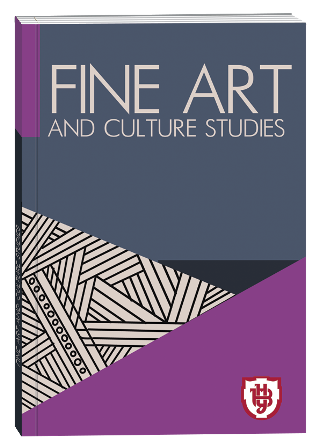TIMBRAL CHARACTERISTICS OF WIND INSTRUMENTSIN THE CONTEXT OF THE BINARY OPPOSITION FEMININE/MASCULINE
DOI:
https://doi.org/10.32782/facs-2023-3-5Keywords:
ensemble, wind instruments, binary opposition female/male, timbre, chamber instrumental music, semantics.Abstract
The purpose of the study is to reveal the peculiarities of the semantic content of the use of the timbre of various wind instruments in the context of the binary opposition "male/female". The methodology of the work combines the methods of historical and theoretical musicology: comparative, comparative-typological, figurative-content, descriptive. Scientific novelty. In the article, for the first time in domestic musicology, the peculiarities of the timbre characteristics of wind instruments are revealed in the context of the ratio of binary-oppositional bases of the fundamental categories of femininity and masculinity. Also, for the first time, the historical development of the specified phenomena is traced in connection with the timbre indicators of the instruments of the wind group. Conclusions. The ancient cultures of India and China provide fairly clearly defined criteria for marking female and male timbre qualities, which are most often associated with the spiritual and social purposes of a particular wind instrument. Accentuation of the male aspect in the use of wind instruments in the Middle Ages in connection with the great importance of the male socio-historical themes of life: the themes of war, defense and protection. The gradual formation of the balance of female/male aspects in their binary opposition in the period of the history of musical art of the New Age. Predominance of masculine and dissonant-feminine aspects during the social upheavals of the revolutionary and war events of the late eighteenth century (French Revolution) and, especially, the twentieth century with its two world wars and numerous social explosions and unrest. Thus, we see that over time the approach to the semantic interpretation of the timbres of wind instruments in the context of the "feminine/ masculine" paradigm acquires an evolutionary meaning – a transition from a rather typical interpretation of the timbre of a particular wind instrument to increasingly individualized, authorial interpretations of their psychological content. Also, a huge role in this process is played by the socio-historical context of meaningful filling of the timbre of a particular wind instrument. We can see the attention to diversity and emphasis of special timbre effects in the chamber-instrumental music of the 20th century and the first decades of the next century, which give a very interesting and individual timbre spectrum of the use of wind instruments in the context of the idea of the binary duality of the opposition female/male and requires a separate consideration of the mentioned topic.
References
Гао Цянжу. Народні інструменти в музичній культурі Китаю. Бакалаврська робота. Суми, 2021. 56 с.
Гишка І. С. Звук як візитна картка інструмента, основний визначник його розвитку, ролі і місця в соціально-культурній сфері різних епох (на прикладі генезису і еволюції звуку труби). Історія становлення та перспективи розвитку духової музики в контексті національної культури України та зарубіжжя. Збірник наукових праць. Вип. 8 / Упор. С.Д. Цюлюпа. Рівне : Волинські обереги, 2016. С. 65–70.
Денисенко М. Про модальність як формотворчу функцію тембру. Наукові записки / Серія: мистецтвознавство. Тернопіль : ТДПУ, 2000. № 1(4). С. 67–74.
Єрмак І. Ю. Флейтове виконавське мистецтво Західної Європи XVIII ст.: розвиток інструмента, техніка, репертуар : дис. … канд. мистецтв. Київ, 2020. 432 с.
Карпяк А. Я. Концепційні засади художнього мислення сучасного флейтиста : монографія. Львів : Наук. т-во ім. Т.Шевченка, 2013. 378 с.
Круль П. Ф. Національне духове інструментальне мистецтво українського народу (малодосліджені сторінки історії) : [монографія]. Київ : НАН України, 2000. 324 с.
Кушнір А. Я. Еволюція поперечної флейти від стародавніх часів до XVIII сторіччя. Музичне мистецтво. 2013. Вип. 13. С. 229–236. 8. Лі Ян. Звукові архетипи флейти в китайській поезії епохи Тан. Музикознавча думка Дніпропетровщини : Збірник наук. статей. Вип. 18 (1). Дніпро : ГРАНІ, 2020. С. 93–104.
Лі Сябінь. Духові інструменти в китайській музичній творчості та виконавстві. Студії мистецтвознавчі. Київ : ІМФЕ НАН України, 2011. №3(35). С. 110–115.
Рудика О. А. Французьке флейтове мистецтво кінця XVIII – початку XIX століття у контексті формування системи професійної музичної освіти : дис… доктора філософії. Київ, 2022. 237 с.







